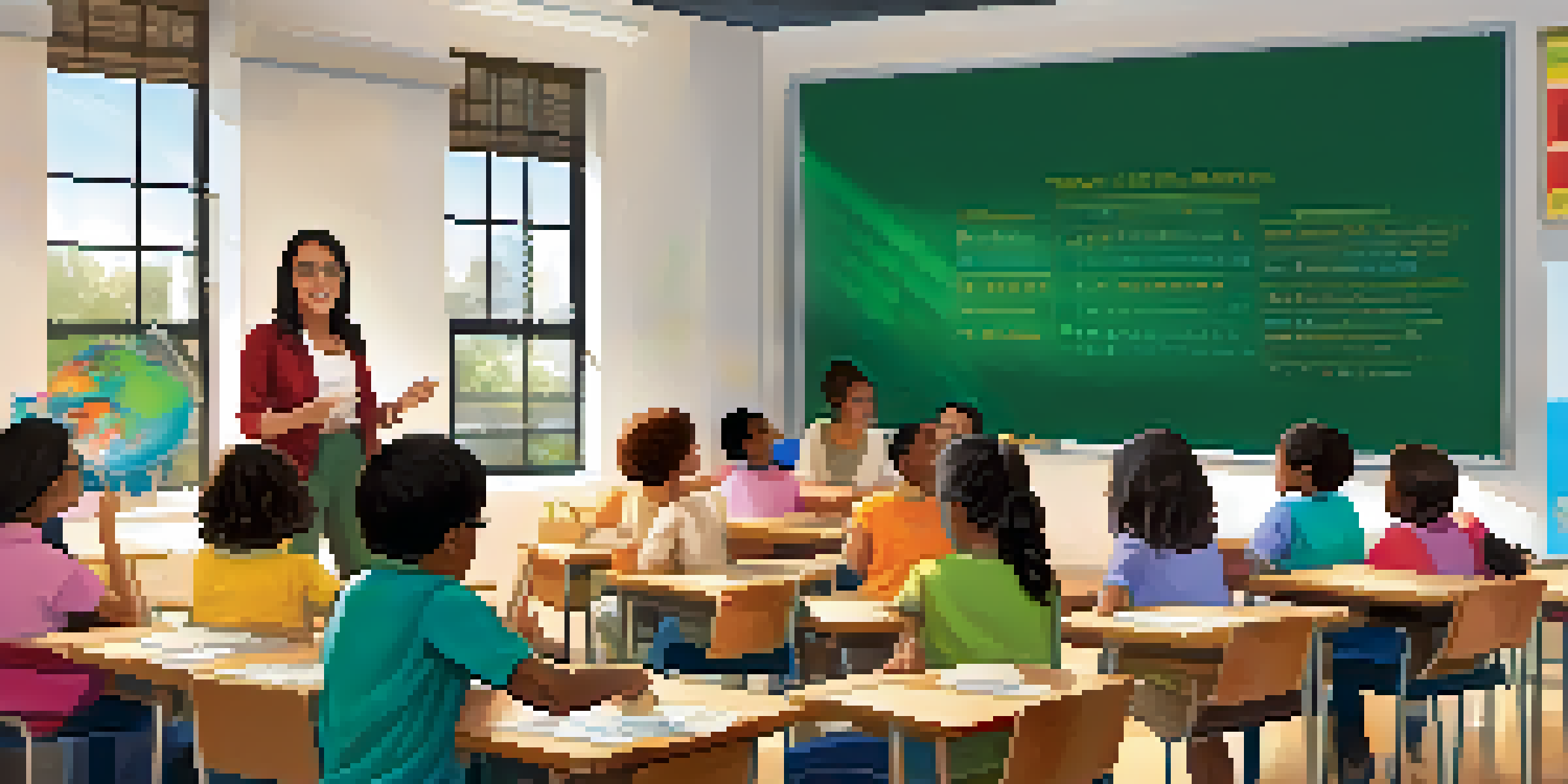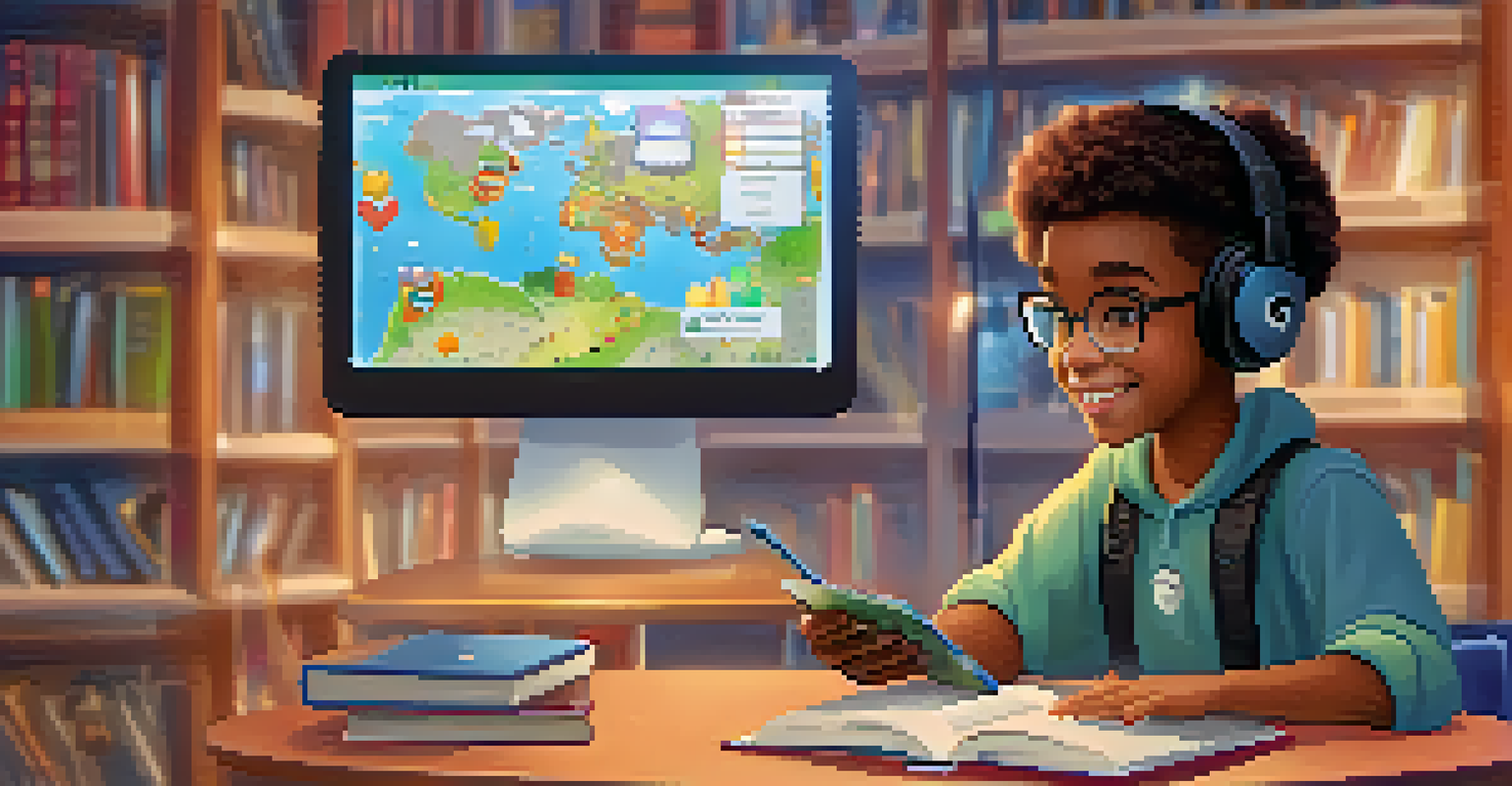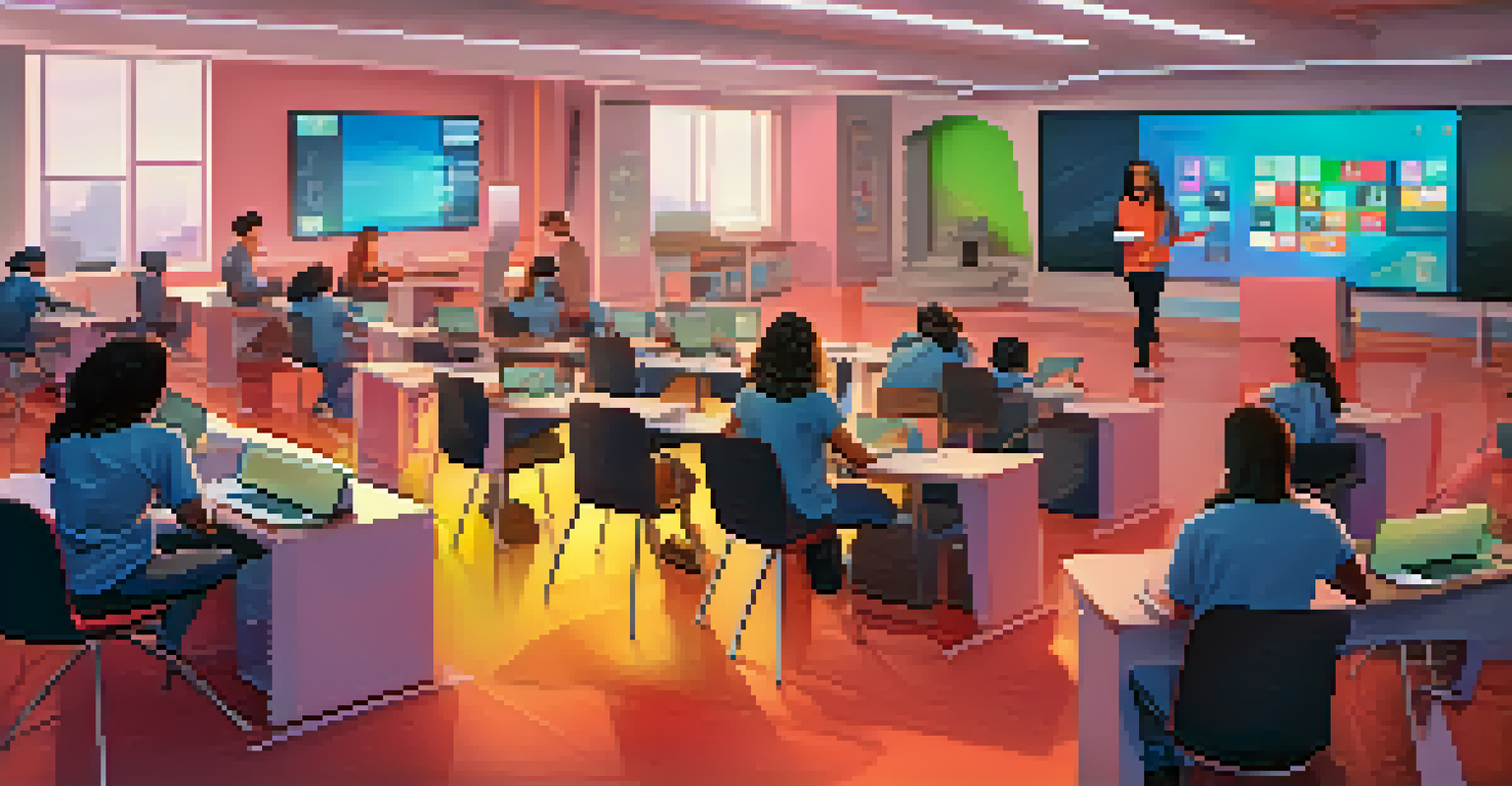Gamification vs. Traditional Learning: A Comparative Analysis

Understanding Gamification in Learning Environments
Gamification involves applying game design elements in non-game contexts, such as education. This approach uses rewards, challenges, and interactive experiences to enhance learning. Think of it as turning a mundane training session into an engaging adventure, where learners earn points or badges for completing tasks.
Gamification is an effective way to engage students and enhance their learning experiences.
By incorporating elements like leaderboards and levels, gamification motivates students to participate actively and persist in their learning journeys. For example, platforms like Duolingo use gamification techniques to make language learning fun and competitive. This method not only captures attention but also fosters a sense of achievement.
Ultimately, gamification transforms the learning experience by making it more dynamic and enjoyable. It taps into our natural love for play, encouraging learners to explore and engage more deeply with the material. As a result, students may retain information better and develop a more positive attitude towards learning.
The Core Principles of Traditional Learning
Traditional learning emphasizes structured education where teachers deliver knowledge through lectures, textbooks, and assignments. This method often follows a linear approach, with a clear curriculum and set learning outcomes. While it may lack the excitement of gamification, traditional learning has its own strengths.

One of the key advantages of traditional learning is its established framework. With a focus on foundational knowledge, students benefit from a systematic progression through subjects. This method ensures that essential concepts are thoroughly covered, providing a solid base for advanced topics.
Gamification Enhances Learning Engagement
Gamification uses game-like elements to make learning more interactive and enjoyable, boosting student motivation and participation.
Moreover, traditional learning fosters discipline and time management skills as students navigate rigid schedules and deadlines. It prepares learners for formal assessments, such as exams, that often require a deep understanding of the material. While it may seem less engaging, many students thrive in this structured environment.
Engagement and Motivation: A Comparative Look
When it comes to engagement, gamification often takes the lead. The interactive elements and immediate feedback create a sense of excitement that traditional methods may lack. Students are more likely to immerse themselves in the learning process when they can earn rewards and see their progress in real time.
The goal of education is not to fill a pail, but to light a fire.
In contrast, traditional learning can sometimes lead to disengagement, especially for those who find lectures monotonous. While some students might thrive in this environment, others may struggle to stay focused, particularly if the content feels irrelevant. This difference in engagement can significantly impact learning outcomes.
Ultimately, the choice between gamification and traditional learning can depend on individual learning styles. While some may find motivation in competition and game-like scenarios, others might prefer a more straightforward approach that emphasizes direct instruction and consistent evaluation.
Learning Outcomes: Which Approach is More Effective?
The effectiveness of learning outcomes can vary significantly between gamification and traditional learning. Studies suggest that gamified learning experiences can lead to improved retention rates and higher levels of student satisfaction. By making learning enjoyable, students are often more willing to put in the effort needed to succeed.
On the other hand, traditional learning provides a clear pathway for assessment and accountability. Students are prepared for standardized tests and can measure their understanding through conventional grading systems. This structured approach can yield strong academic results, but it may not always foster a love for learning.
Traditional Learning Provides Structure
Traditional education offers a systematic approach with clear objectives, ensuring foundational knowledge and discipline among students.
Ultimately, the effectiveness of each method depends on the specific context and the needs of the learners. Combining elements of both can create a balanced approach, leveraging the strengths of gamification while maintaining the rigor of traditional learning.
Technology's Role in Gamification and Traditional Learning
Technology has been a game-changer for both gamification and traditional learning. In gamified environments, digital tools enable interactive experiences that can be accessed anytime, anywhere. For example, online platforms can track progress, offer challenges, and create communities of learners who support each other.
In traditional learning, technology enhances classroom experiences through tools like multimedia presentations and online resources. Educators can incorporate video lessons, virtual simulations, and online assessments to enrich their teaching methods. This integration can make lectures more engaging and provide students with additional resources.
As technology continues to evolve, the potential to merge gamification and traditional learning becomes even more promising. Teachers can harness the best of both worlds, creating an educational landscape that is not only effective but also highly engaging for students.
Challenges in Implementing Gamification
While gamification offers exciting possibilities, it also comes with its own set of challenges. One major hurdle is ensuring that the gamified elements align with the learning objectives. If rewards and incentives are not thoughtfully integrated, they can distract from the educational goals rather than enhance them.
Additionally, designing effective gamified experiences requires expertise and resources. Educators may need training to create engaging content that resonates with students. Without proper support, the implementation of gamification can become overwhelming and may lead to frustration rather than excitement.
Future Trends Favor Blended Learning
The future of education will likely integrate gamification and traditional methods, creating personalized and engaging learning experiences.
Finally, there’s the risk of over-reliance on gamification, where students focus solely on earning points or badges. This can detract from the intrinsic motivation to learn and understand the material deeply. Striking the right balance is crucial for maximizing the benefits of gamification.
Future Trends in Learning: Blending Approaches
As education continues to evolve, the future likely holds a blend of gamification and traditional learning. Hybrid models that incorporate elements from both approaches can provide a more comprehensive learning experience. Imagine a classroom where students engage in traditional lectures complemented by interactive games that reinforce the material.
This blended approach can cater to diverse learning styles, ensuring that both visual and auditory learners benefit from the curriculum. By integrating gamification, educators can enhance motivation and engagement, while traditional methods provide structure and accountability.

Looking ahead, the potential for customization in learning experiences is vast. With advancements in technology, we may see a rise in personalized learning paths that adapt to individual needs, combining gamified elements with traditional assessments for a well-rounded educational experience.